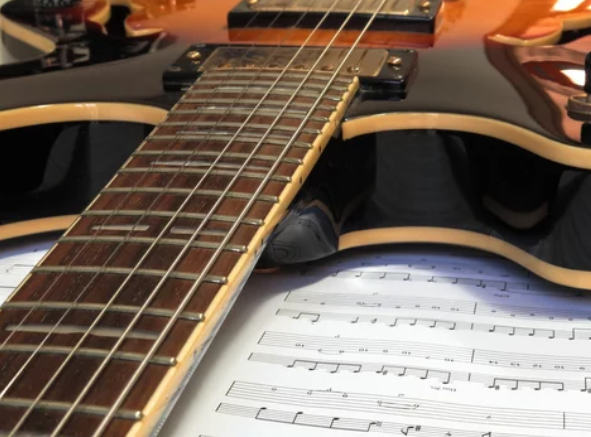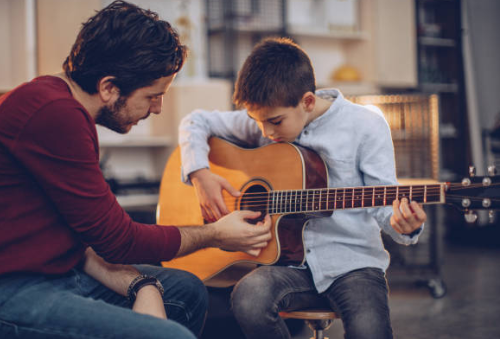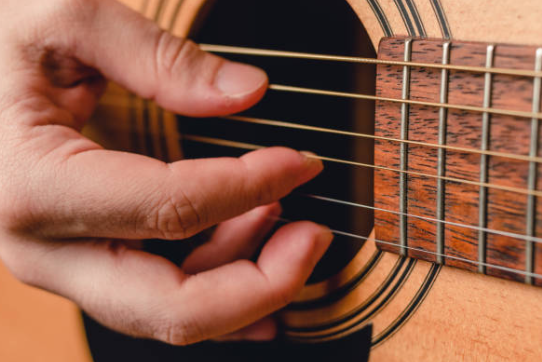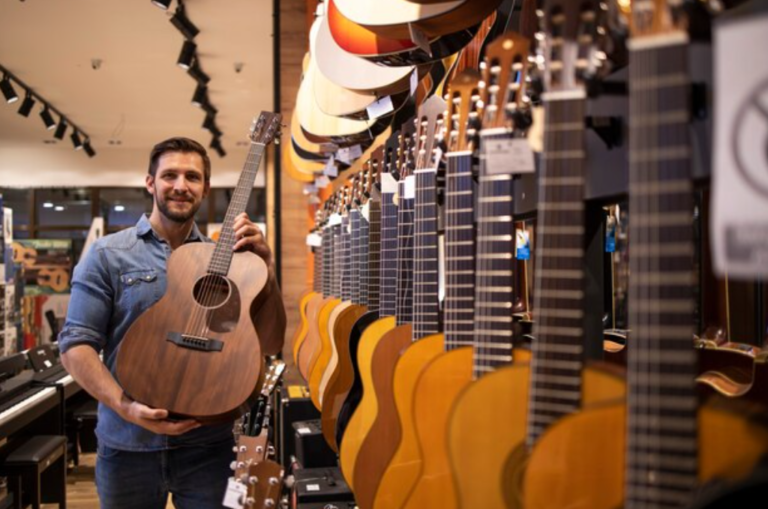Easy! How To Play The D Minor Pentatonic Scale

For guitarists of all skill levels, mastering the pentatonic scale is like uncovering a musical superpower. It’s a foundational tool used across genres—from blues and rock to jazz and beyond. Today, we’ll dive into the D minor pentatonic scale, a versatile and emotive scale that can significantly enhance your playing.
What is the D Minor Pentatonic Scale?
The pentatonic scale, in its simplest form, comprises five notes per octave, which is why it’s named “penta” (meaning five) and “tonic” (pertaining to tones). The D minor pentatonic scale specifically centers around the key of D minor and includes the following notes:
- D (Root)
- F (Minor third)
- G (Perfect fourth)
- A (Perfect fifth)
- C (Minor seventh)
These notes create a scale that’s both moody and dynamic, perfect for crafting soulful solos and deep, resonant melodies.
Playing the D Minor Pentatonic Scale on Guitar
Open Position
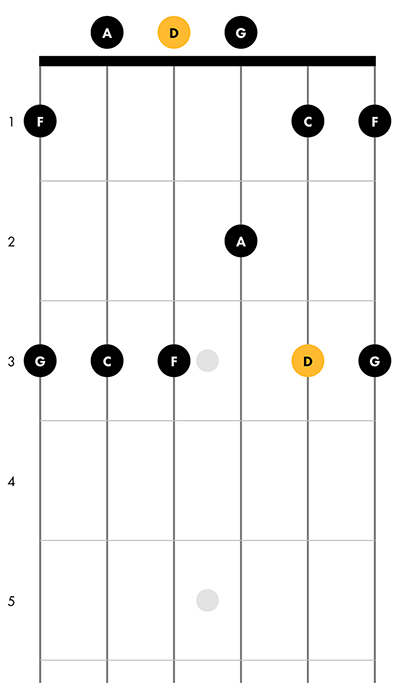
To begin playing the D minor pentatonic scale in the open position:
- Start by putting your index finger on the 1st fret of the low E string.
- Your ring finger goes on the 3rd fret on the same string.
- Keep your index finger on the 1st fret
- Your ring finger on the 3rd fret as you navigate back and forth across the strings.
- Your middle finger will also come into play on the G (3rd) string for a note while you play this scale.
Position 10
For those ready to explore further up the neck, the first “box” pattern of the D minor pentatonic scale starts on the 10th fret of the low E string (6th string):
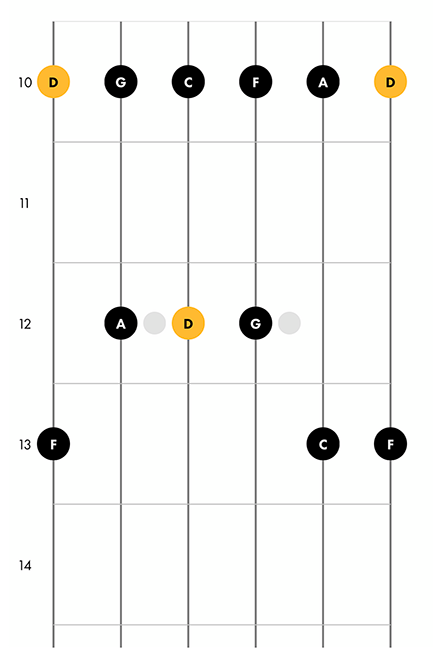
- Placing your index finger on the 10th fret of the low E string.
- Stretch your pinky to reach the 13th fret to hit the next note.
- Move to the A string, keeping your index finger on the 10th fret,
- Use your ring finger to play the 12th fret.
This pattern can be repeated across the fretboard, moving vertically and horizontally as you get comfortable with the notes and their positions.
Practical Applications
Improvisation
One of the most exciting aspects of learning the D minor pentatonic scale is its usefulness in improvisation. Whether you’re jamming over a blues progression in D minor or experimenting with a rock or jazz piece, this scale provides a solid foundation for solos and improvised lines.
Composing
For songwriters, the D minor pentatonic can be a source of inspiration. Its notes can form the backbone of a melodic line or serve as a jumping-off point for composing more complex pieces.
Techniques
Incorporating techniques like bends, slides, and hammer-ons within the pentatonic scale can bring it to life. For example, bending the note C up to D at the 13th fret of the B string adds a dramatic flair typical of blues and rock music.
The D minor pentatonic scale is a gateway to a richer, more expressive guitar playing. It’s straightforward yet powerful, making it an essential scale for guitarists looking to deepen their understanding of the instrument and expand their musical vocabulary. So grab your guitar, dive into these positions and patterns, and start making music that resonates with your unique voice!
If you’re interested in learning an instrument, at Real Brave, we offer an incredible experience like no other place in music lessons for kids and adults by guiding them from the beginning stages of getting to know an instrument all the way through performing for family and friends on stage. Our instructors come from all over the world, bringing extensive experience on a wide range of instruments. Click below and book a free lesson with us!
Author: Daniel Powers Jr, the founder of Real Brave™, serves as the chief inspiration to thousands of students in the Real Brave music instruction program. He’s also the visionary behind PracticePad™, an online platform for live one-on-one online music lessons, lesson tracking, and scheduling. Beyond his entrepreneurial pursuits, Daniel leads a non-profit organization that provides formerly homeless children with access to music education, making a profound impact on their lives. His unwavering dedication to music, innovation, and education continues to inspire individuals to reach their fullest potential while creating positive change in communities. Follow Real Brave on all the socials:
youtube.com/@realbraveinc
twitter.com/realbraveinc
https://www.tiktok.com/@realbraveinc
instagram.com/realbraveaudio
facebook.com/realbraveinc



